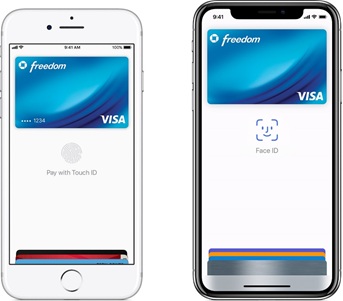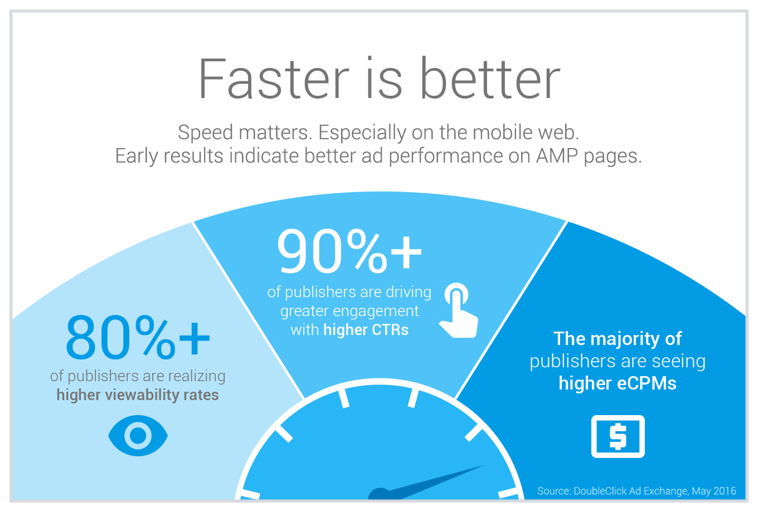
It has become a challenge for business owners to stay relevant across all platforms where the potential customer is present. Digital platforms are the most common and easy ways to achieve traffic that converts. The challenge is to retain these customers and make them want to come back to your business. Mobile is the newest and most relevant platform out there which can become a path to more conversions for your business. On an average, Americans spend three hours and twenty-three minutes on their smartphones every day.
Inbound marketing experts have been closely following the growth of mobile for years, but to consider it a ‘growing trend’ is not going to help your marketing strategy. 80 percent of all internet users now own a smartphone. It is 2018, and you should have optimized your business for mobile by now, but it is still not too late if you haven’t.
- As of 2018, up to 80 percent websites are mobile optimized (Source)
- By the year 2019, 72 percent of digital ad spending in the US is going to be for mobile advertising (Source)
- 57 percent users won’t suggest a poorly-optimized website to other users (Source)
The most common roadblock in mobile marketing is to figure out where to begin. People fear that a long report and charts are required to kickstart a mobile strategy, but that is not entirely true. If you follow a lean planning principle, you can draw a compact mobile marketing plan in a few A4 sized papers. You must be well-read in this domain and be able to relate mobile marketing to the niche of your business. It requires research, which will become the foundation of all your marketing efforts.
Types of mobile marketing campaigns
Here are some of the most common types of mobile marketing campaigns used by brands all over the world:
Text messages
The simplest and very effective way of reaching your target audience is through text messages. Your ad will be sent to the user in a text message format. Considering the portion of users with a smartphone, you can add a link to the text messages which can take people to the app install or a landing page on their mobile browser.
Mobile advertisement
Your brand can purchase ad space in multiple places across the web. It can be ads on social media sites, posts or banner ads on search engines.
In-app purchases
In-app purchases are the best way to get more conversion within your app. Users have complete control over their buying habit in an app. You can add this as an option not to drive away existing users. If you force a purchase on users, they might bounce away from the app.
Social media
We all know that social media websites are used mainly on smartphones or tablets. This makes it an ideal opportunity to grab a huge chunk of this user base to your favor. Campaigns which use social media on mobile platforms are more successful, because of the subtle seeding of promotion with social media messages.
Mobile searches
It is easier to see how you perform online through mobile searches. Searches made on mobile platforms are easy to decipher according to location.
QR Codes
This is a new and exciting way to secure more customers. Qr code scanners are available in almost every new smartphone, or else there is always an app to achieve the goal. Use dynamic QR codes to connect the physical and digital world. For example codes on the restaurant, brochures can unlock a special discount on the only order. If you are a clothing business, scanning code in a physical store can get the users a discount on your app, etc.
Emails
Make sure that your campaigns are easily opened on mobile email clients like apps and email platforms.
Mobile websites
Campaigns which take place on your website which is mobile-friendly. It also includes auto-play features, landing pages, and auto-download features.
Mobile compared to the desktop
The reason behind this buzz around mobile marketing lies in the fact that the user preference is shifting. You can’t prepare a campaign for a platform where there are no users. Mobile is the new place to be, so your business needs to have a presence on this platform. Applications like Snapchat and Instagram have made people depend highly on the phone. It is a risky thing to have a business which revolves around a smartphone, but these social media giants have proved that it can work.
However, the desktop is not entirely dead. Users like to perform their initial research on mobile and then head out to a large desktop screen for final purchase. The desktop is not out of the equation, but mobile will always perform a role in the conversion funnel. For example, Google’s Travel trends identified that travelers perform a detailed search on their phones for hotels, but proceed to a desktop to finalize their decision.
You will also prefer to view the details of your vacation hotel on a desktop screen before finalizing anything because it is more suitable that way. Therefore, make sure that mobile marketing is always there to let users know that your business is savvy enough to help them out. Divide and conquer all the way. Invest in a solid mobile marketing strategy to pick up leads, prepare ground if the leads shift from one platform to the other, and then secure purchase through customer service/prompt responses.
To stay a mile ahead of the competition, make this experience as smooth and seamless as possible, so there are no roadblocks that make the user change their mind.
App strategy
Mobile apps are one of the most frequent places where a user spends their time. 89 percent time is spent on mobile apps, whereas 11 percent is spent on websites. “There must be an app for this” is the common thought of a smartphone user when they want a business to solve their key issues. Maps, ordering food, finding shops and paying bills are all done on applications built by savvy businesses. These apps are a huge source of income for many startups. Most startups are only based on one application and a website.
You must work on an app strategy if you want your users to trust and invest in you. An application is very different than a website because it is quick and easily accessible. You don’t have to manage load times or worry about resolution in an application. Furthermore, applications that cater to every device are more popular. Focus on creating an application which provides a fluid and smooth user experience.
If you are building an application, go through the proper route and build a whole campaign around it. Start with brainstorming ideas, meeting developers who can work around your timelines and then invest in a soft launch. Small business presence needs a mobile application to cater to users.

Consider the growth of e-commerce market in the US. This has given birth to several issues, one of which is payment gateways for secure transactions. Every website can’t offer payment gateways which are common in huge e-commerce websites. As a result, businesses came up with apps to deal with this payment situation. Digital wallets like PayPal and ApplePay have their apps, while companies like Amazon have also introduced Walmart Pay to make it easy for users to interact with their business. Apps cut down time in logging in or out, remembering passwords and securing login every time a purchase is made.
Website optimization
If you run a website for your business, start by optimizing it for mobile. Users access your website through multiple devices which are based on different operating systems. If you are new to the mobile marketing world, the website should be the first place where you begin making changes. Contact a technical director who can figure out how to properly optimize your website and then make the said changes. A responsive website is also counted as a huge ranking factor for your business. Google prefers to show websites in search results which are responsive for mobile.

Work on mobile keyword research as it can reveal some interesting information to you. Content creation is easier when you know what your user wants to read. Keywords and search intent play a huge part in identifying your key influencers and reasons why people buy from you. One of the best things to incorporate into mobile websites is AMP (Accelerated Mobile Pages). These pages are built to be highly smooth and load in seconds. Most news websites have AMP pages, so the user gets to the websites in no time. Both Google and social media websites work with AMP to load the pages as soon as you hit the search button. This website contains resourced and tutorials for developers to learn AMP and coding, which is like HTML on a diet.
Analytics for mobile
After you launch your mobile marketing strategy, you should adopt the right tools to measure the success metrics. These statistics will guide you in your future campaigns and tell you what works. Track these analytics on a regular basis when you are beginning your campaigns. Track analytics during development and then when the campaign has launched.
The best tool to track is Google Analytics. It breaks down statistics to the very day and hour so you can get an idea of popularity, demographics, and devices used by your traffic to access your content. This enables you to make informed decisions and cut down on investments which are not having a worthwhile impact on your users. If you give your users what they want to see, you will notice a spike in your conversion rate.
Where to start looking for key metrics? This question baffles many professionals because there is too much to look at. Start with engagement metrics because that is where you get to know how much users like your content. Many websites have more mobile users than desktop users. If you are getting most of your traffic from mobile, it is a good sign. You can proceed to look at the following metrics:
- Bounce rate (number of people who opted out during a session)
- Pages visited by a user during one session
- Website loading speed
- Demographics
- Devices used
- Referral sources (social media is a great pathway to bring traffic to the site)
- Top performing pages
Take these metrics and compare them with desktop metrics to see what has been working well for your website. This data from Google Analytics will help the marketing team in coming up with successful and impactful campaigns.
Usability
Anything which is working on a desktop site may not work that well on a mobile site. Use tools and devices to figure out how is your site performing according to usability standards. Keep checking and re-checking the pages to identify issues in page loading and mobile rendering. It may be possible that a page will look perfect on one device but will load poorly on another device.
When checking usability, you have to count smallest features like the distance of buttons from user’s fingers and the option to switch a view horizontally. Work with your development team to create a seamless, fluid experience. Keep A/B testing the work to eliminate the factors that don’t work. Google has some helpful resources to work when designing a mobile site. Here is a comprehensive guide to A/B testing your pages to get you started.
Time to build your mobile marketing campaign
It is essential to start working towards your first mobile marketing campaign. It is not an option to ponder over anymore. Marketers need to educate themselves on savvy mobile analytics and tools to guide the campaign building process. The progress in mobile marketing will keep evolving, and one needs to stay updated with the latest trends. If marketers help business in creating the best mobile experience, we won’t have to use a desktop for trivial tasks anymore!